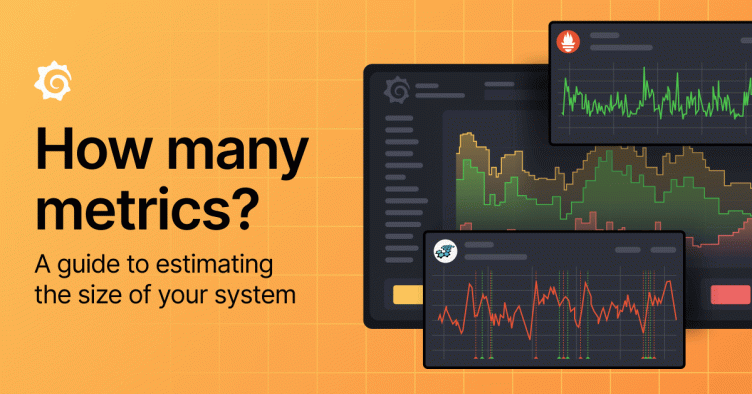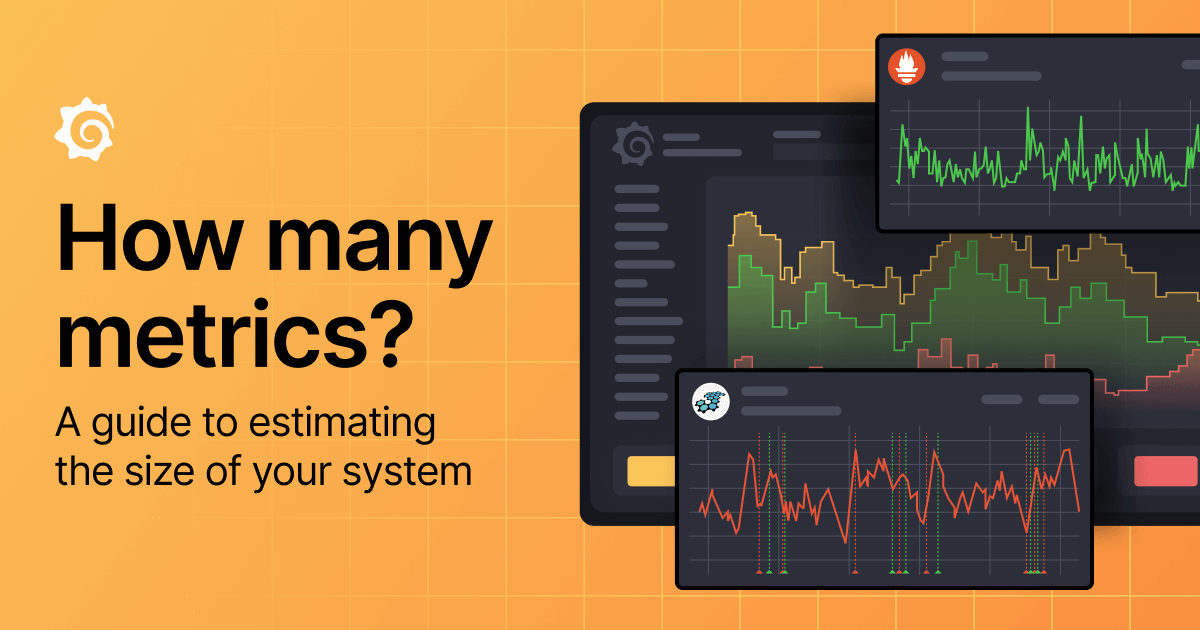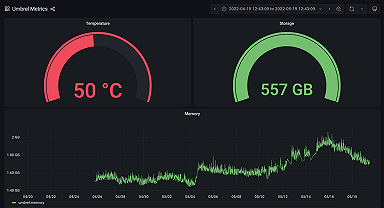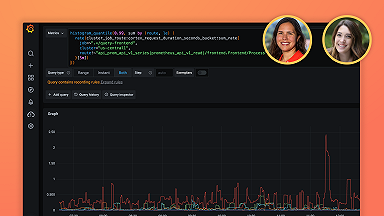
How many metrics? A guide to estimating the size of your system in Grafana Cloud
Grafana Cloud, our composable observability platform, is billed based on usage. A common question we get is: “How much will it cost to monitor N servers?” Well, the recently expanded Grafana Cloud Free tier includes up to 10,000 active series.
To help you understand what that translates to in terms of time series requirements, here’s a rough guide to estimating what you’ll need.

Graphite vs. Prometheus
Before we dig into the numbers, let’s first provide some background on the technology at the heart of this discussion. Grafana Mimir is a horizontally scalable, highly available, multi-tenant TSDB that serves as the backend for ingesting metrics in Grafana Cloud. It’s compatible with multiple data sources, including the two we’ll focus on for the remainder of this section: Graphite and Prometheus.
The number of servers you can monitor with the Grafana Cloud Free tier will depend on which of those two technologies you choose.
Each 10,000 active series of Hosted-Graphite is enough capacity to observe around 33 servers, assuming 300 series per server at 1 data point per minute (DPM), when just looking at Linux-level performance metrics (CPU, memory, disk, and network). These assumptions are based on the usage of Collectd, which is the de facto standard agent for Linux system monitoring and Graphite.
Each 10,000 active series of Prometheus data is useful for ~13 servers; node_exporter can be set up to export ~700 active series per server, which at a 60-second scrape interval translates to 2,800 DPM.
Prometheus needs more series per server than Graphite, due to the use of more fine-grained metrics (per CPU, all CPU states, etc.), than the default collectd setup. This, however, can be tuned by the user.
And what if you have more servers than you can observe with the 10,000 time series included with Grafana Cloud Free? You can upgrade at any time to our Cloud Pro or Cloud Advanced plans, which are designed for growing teams and large enterprises.
Get started with Grafana Cloud today
Companies such as Roblox, Exabeam, and Wells Fargo are already taking advantage of the various offerings in the fully managed Grafana LGTM Stack on Grafana Cloud (Grafana Loki for logs, Grafana for visualizations, Grafana Tempo for tracing, and Grafana Mimir for metrics). Grafana Cloud users gain the benefits of observability without the overhead of building, installing, maintaining, and scaling their stack. And since it’s composable, they can use it to host all their metrics, logs, and traces, or they can mix and match with other tools. Moreover, Grafana Cloud customers can also extend their solution to include performance and load testing with Grafana Cloud k6, incident response and management with Grafana Incident & Response Management, and infrastructure monitoring, such as Kubernetes Monitoring.
To learn more, check out some of our upcoming webinars related to Grafana Cloud, including sessions on designing dashboards, identifying high cardinality metrics to potentially lower your costs, and learning the basics about Mimir.
Grafana Cloud is the easiest way to get started with metrics, logs, traces, and dashboards. We have a generous forever-free tier and plans for every use case. Sign up for free now!



